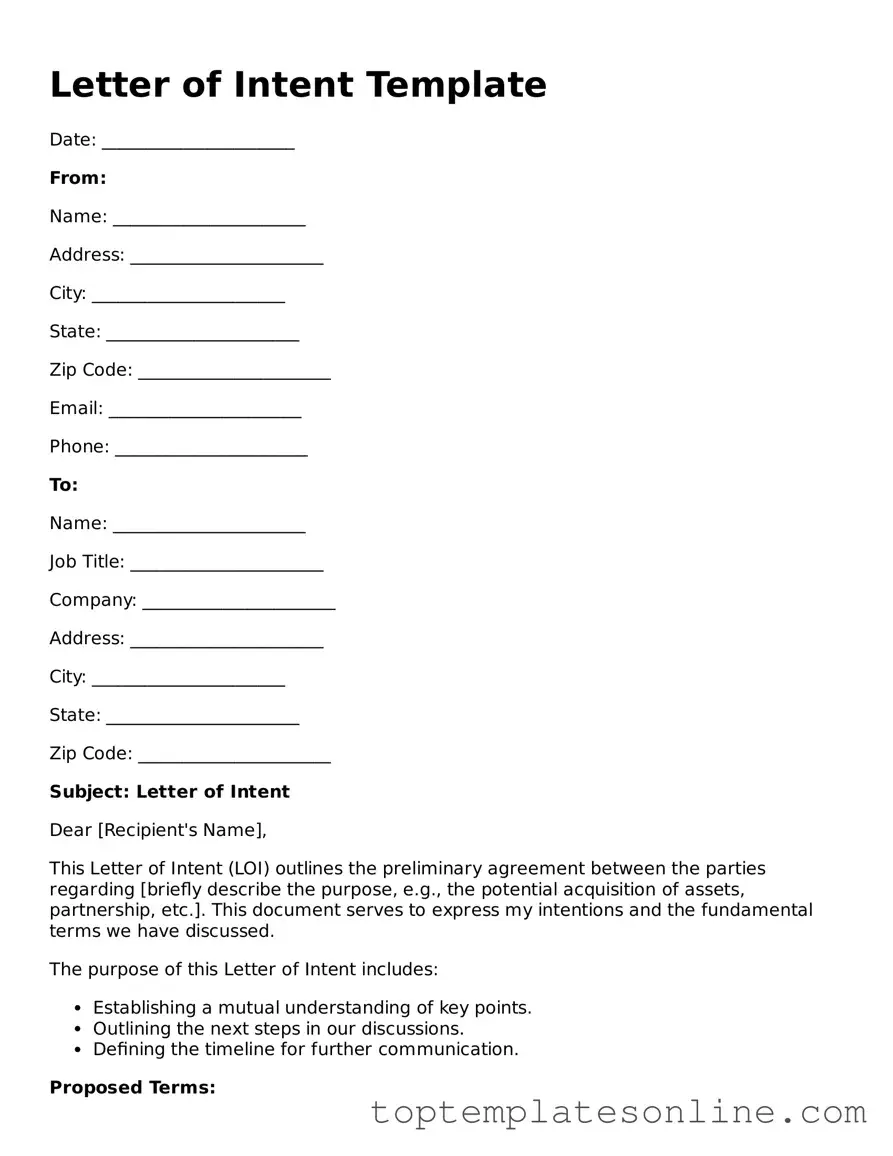A Letter of Intent (LOI) is a crucial document often used in business transactions, real estate deals, and various agreements. It serves as a preliminary agreement that outlines the basic terms and intentions of the parties involved. Typically, an LOI includes essential components such as the purpose of the agreement, the key terms and conditions, timelines, and any contingencies that must be met. While it is not legally binding in most cases, it sets the stage for more detailed negotiations and formal contracts. By clearly stating the intentions and expectations of each party, an LOI helps to ensure that everyone is on the same page before moving forward. This document can also include confidentiality clauses, exclusivity agreements, and any other pertinent details that may influence the final agreement. Understanding the importance of a Letter of Intent can streamline negotiations and foster a more productive relationship between the parties involved.
